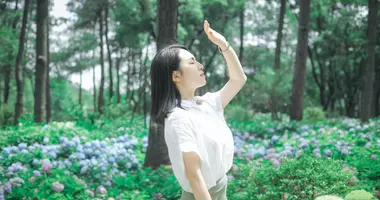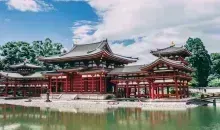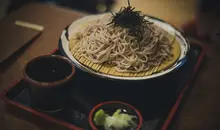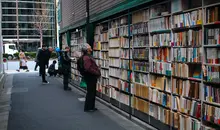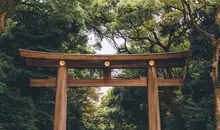Japanese Fashion: from chic to shock
- Published on : 16/09/2025
- by : Joshua
- Youtube
Japanese fashion is deeply rooted in the country's history and culture. From functional to expressive, its styles have emerged over the centuries and continue to influence the contemporary world.
Detailing the history of fashion and aesthetics in Japan is impossible to do in a single article, as there are quite literally thousands upon thousands of texts on the matter. Not only that, but even defining what Japanese fashion can be entails extensive discussion and pondering.
Sometimes crazy but always at the forefront of the trends, Japanese fashion is a source of inspiration for designers around the world, and fashion in Japan is a veritable institution; from the traditional and practical to the contemporary and avant-garde, Japanese fashion conjures up a wide variety of imagery, all of which largely stands out, and all of which is valid.
It is because of this that Japan as a country is often flocked to by fashion enthusiasts and why its fashion subcultures are world-renowned. Let’s take a brief look at different elements of Japanese fashion and their place among the current cultural zeitgeist.
Japanese fashion throughout the years
The subject of fashion in Japan coincides with the history of civilization in Japan, and that is a history that is very long and colorful.
The Japanese archipelago has been inhabited since the Paleolithic period, and the Jomon period is often considered the genesis of society in its history. Defined by a hunter-gatherer lifestyle and distinct pottery, garments of this time were constructed from natural fibers like hemp, which would set a precedent for centuries to come.
During the Heian period (794-1185), the elegant kimonos that are heavily associated with traditional Japan became institutions of Japanese attire, and into the Edo period (1603-1868), they, along with the artistry associated with them, further developed.
The Meiji Restoration (1868-1912) marked the introduction and implementation of more international aesthetics into Japanese attire. These garments became known as yofuku (洋服), literally translating to “western clothing,” in contrast to traditional wafuku (和服), which consisted of original Japanese clothing. In fact, despite the introduction of yofuku, at this time, traditional Japanese clothing still held a prominent presence, as it typically was better suited for everyday life in Japan, especially for women.
However, into the 20th century, changing times led to the further incorporation of Western aesthetics in Japanese fashion, with the Taisho period (1912-1926) seeing long, draping dresses and distinct headwear reflective of American stylings. Art Deco architecture and motifs complemented these looks, with the advertisements from the famous Shiseido cosmetics brand reflecting this.
From the early to late 1900s, Japanese interpretations of classic Americana stylings began taking shape, largely adopted during the post-war era and the influence of the occupying U.S. military presence. Japanese-made denim, oxford shirts, leather jackets, and leather shoes became more and more prevalent, and into the modern day, these Japanese renditions of classic western garments have become the coveted gold standard.
The 1980s of the later Showa era (1926-1989) would mark a definitive moment in Japanese fashion history, with the rise of three of its most acclaimed fashion houses that are amongst the most treasured in the industry: Comme des Garcons, Yohji Yamamoto, and Issey Miyake. Though these brands were founded in the 1970s, the 1980s are when they reached international acclaim, shifting the eyes of the fashion world to Japan with their avant-garde aesthetics dominating the runways of Paris Fashion Week. They are held in strong acclaim by enthusiasts and have a long-lasting impact on designers of today.
The 1990s gave way to Japan’s eclectic streetwear scene, largely influenced by U.S. hip hop, skate, and street culture; the backstreets of the now world-famous Harajuku in Tokyo (referred to as “ura-hara”) were ground zero for brands like Neighborhood, Mastermind, A Bathing Ape, and UNDERCOVER.
The era from the late 1900s to the early 2000s marked a time of international crossover and mainstream market appeal, with the aforementioned avant-garde designers and figures such as Pharrell Williams, NIGO, and Hiroshi Fujiwara becoming ambassadors for Japanese fashion aesthetics that continue to influence and be influenced by fashion all around the world.
A scene of sub-cultures
Of course, Japanese fashion cannot be discussed without the mention of its medley of subcultures with distinct aesthetics and histories. Within these subcultures are even more subcultures, so to do justice to any of these in particular would require whole dedicated articles on their own.
Oftentimes, these subcultures are spearheaded by the youth in Japan, with older figures revered as the original trendsetters and even authorities. For many, Tokyo’s ambitious fashion students from schools like Bunka Fashion College and Tokyo Fashion College would lead the charge, developing notable presences in parts of the city like Harajuku, Shibuya, and Shimokitazawa.
Here are some well-known examples of fashion subcultures in Japan and a brief description of each. Of course, what these aesthetics and subcultures mean to their practitioners and fans differs from person to person, and definitions can be fluid and change over time.
- Lolita: Influenced by Victorian-era fashion, Lolita is largely characterized by highly detailed, highly voluminous garments, especially dresses and skirts. Many of the design elements have a strong focus on cute, traditionally feminine motifs with bright pastel coloring. Within Lolita, different subsets like gothic lolita, punk lolita, and steam lolita also have followings.
- Visual Kei: Visual Kei is a subculture that encompasses aesthetics, music, and artistry as a whole package. Legendary 80s rock band X Japan is often cited as the progenitors, with the fashion being largely derived from their distinct looks at the time. Reminiscent of stylings many would classify as “goth punk,” members of the subculture will often be dressed in stark black with intricate detailing and silver accessories. Some more feminine looks will feature bright neons.
- Mode Kei: Derived from the French word for fashion, "mode," mode kei emphasizes more subdued, elegant aesthetics with elements of high-fashion avant-garde that elevate them above more standard looks. Many will say that the idea is to emanate the feel of fashion weeks in Europe or New York. The big 3 design houses of Japan—Comme des Garcons, Yohji Yamamoto, and Issey Miyake—are often mentioned in this vein, with non-Japanese brands such as Maison Margiela and Loewe often thrown into the mix. Contemporary Japanese brands that are said to promote this aesthetic include ones like Mikage Shin, Sacai, Shinyakozuka, and Auralee.
- Gyaru: Taken from the Japanese pronunciation of the English word “girl,” gyaru fashion is said to have had its heyday in the 1990s. With starkly tanned, orange-tinted skin, bold makeup, flashy prints, and loud styling, the aesthetic stands as an affront to typical Japanese female beauty standards. The look has gone through phases of different extremes over the years, with a fairly recent resurgence in certain communities. The male version of the look is known as “gyaru-o.”
- Ametora: Short for “American Traditional,” Ametora largely comes from the influence of the West in post-WWII Japan. Classic Americana pieces like blazers, sportcoats, bomber jackets, and, of course, raw denim, have traditional roots but with slight remixes in both design and styling that make them distinctly Japanese. Books such as “Take Ivy” and “Ametora: How Japan Saved American Style” document the characteristics of the look. Notable brands include Buzz Rickson, Kapital, Van Jacket, Kamakura Shirt, Studio D'artisan, and Visvim, all of which tote a unique sense of old-school cool.
- Decora: Decora fashion makes a point with unapologetic use of color and accessories. Oftentimes, the more, the better, and standard styling tips are thrown out the window. That is not to say that there is no method to the madness, as true Decora meticulously packages the chaos into something unique. Items such as pins, bandaids, hair accessories, and jewelry all add visual interest, and it is this style that is most often associated with the “Harajuku aesthetic.”
Fashion and shopping in Japan
A great part about Japan for fashion lovers is its commonplace in many people’s lives. Most people in Japan, especially in big cities, will have at least a baseline interest in fashion and clothing, be it designer, thrifted, or DIY, and thus, the apparel retail culture reflects this.
Brick-and-mortar shopping is strong in Japan and ranges from world-known boutiques and flagship stores for niche brands hidden away in places that many would never notice if they were looking for them. Take a look at some of our favorite areas in cities throughout the country for a great retail experience, where the day you buy something will just be as memorable as the piece you take back home!
Shopping in Tokyo
Harajuku/Omotesando/Aoyama
Three of the most notable shopping locations in Tokyo are within the same area. From Yoyogi Park, one can pass through Harajuku, then to Omotesando, then proceed to Aoyama, with an elevation in luxury as you go. Despite their proximity, however, each neighborhood tends to cater to different fashion aesthetics. Harajuku with a medley of sneaker shops and streetwear brands, Omotesando with well-established international boutiques, and Aoyama with quieter streets with more of a medley of hidden luxury shopping boutiques, as well as the flagship stores for Japan’s major designer labels. Comme des Garçons, Yohji Yamamoto, and Issey Miyake’s different lines all have stores on Aoyama’s main street.
Shimokitazawa/Koenji
Flocked to by locals and visitors alike, these two neighborhoods are largely known for their collection of vintage shops that run throughout the streets. Different second-hand clothing shops will specialize in different things, some reused luxury goods, other western staples like Dickies pants, Barbour jackets, and college sweatshirts, and more!
In Koenji, Whistler has one of the most impressive offerings of goods, including vintage boots, dress shoes, Oxford shirts, and sweaters. Go to Amore 2 in Shimokitazawa for well-curated, well-organized high-end goods, Kakko for more avant-garde works, and then scour the streets of the neighborhood for more down-to-earth offerings.
Explore Tokyo's neighborhoods with ease using the Suica card!
Shopping in Osaka
Shinsaibashi
This neighborhood is best known for its shopping street, which offers both affordable items and department store goods. Their website allows you to keep up with the latest trends. Don't miss the Parco and Daimaru department stores, as well as ALLU, which offers some of the best selections of vintage and secondhand designer clothing in Osaka!
Shinsaibashi is also a great place to discover restaurants and buy souvenirs. The river runs through the neighborhood adjacent to the famous Dotonbori, known for its street food and numerous attractions.
Amerika-mura
The streetwear hub of Osaka, Amerika-mura is bursting with personality! Its name comes from the abundance of shops selling classic American clothing and vintage pieces. The famous Alice on Wednesday boutique is a must-visit for its eccentric and kawaii aesthetics. All lovers of classic Western styles should visit the Amerika-mura Free Market. Many second-hand shops specialize in streetwear and hypebeast items, such as Supreme, A Bathing Ape, and many others.
It's also a great area for dining and relaxing, with many cafes and restaurants. Be sure to visit Sanaku Koen to fully enjoy the unique atmosphere of the neighborhood.

































